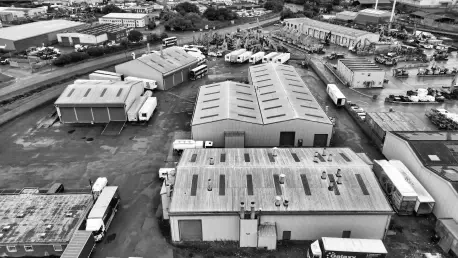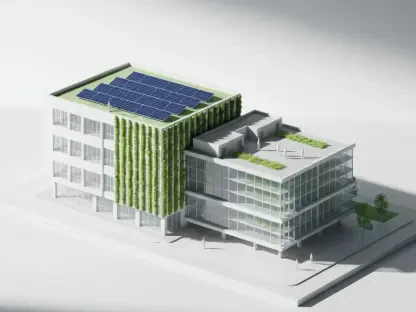In recent times, the UK has experienced a significant surge in investor demand for commercial properties across various sectors, largely fueled by strategic interest rate cuts. These fiscal adjustments have been pivotal in rejuvenating the flagging interest in retail and office spaces, marking a reversal from previous declining trends. The renewed interest is palpable, with recent data indicating a 35% year-over-year increase in inquiries concerning retail property listings. This surge is a stark contrast to the 15% decrease recorded only a year prior. Easing financial conditions have reinvigorated the market, offering fresh prospects for stakeholders eager to tap into the newfound potential in retail and office spaces.
The Impact of Rate Cuts
Renewed Interest in Retail Spaces
One of the most significant impacts of the UK’s interest rate cuts has been the revival of retail properties as attractive investment opportunities. The Bank of England’s decision to lower base rates in 2025 has created a favorable environment for investors, resulting in a 56% surge in demand for high-street retail properties. This increase marks the highest demand since 2021, reflecting investors’ renewed confidence in the resilience and potential profitability of the retail sector. Additionally, the overall commercial investment appetite witnessed a 20% uptick compared to the second quarter of the previous year. This upward trend is further bolstered by a 4% decline in retail property availability, creating a sense of urgency among investors. Despite the ongoing expansion of e-commerce, the increase in businesses seeking to lease retail premises by 10% underscores a strong belief in the enduring relevance of physical retail spaces.
Office Sector’s Resurgence
The office sector has also experienced a notable resurgence, driven by the effects of rate reductions. Investment demand for office spaces has soared by 65%, while lease inquiries have risen by 12% year-over-year. Major urban centers like London have been at the forefront of this revival, with leasing interest in Westminster and the City of London increasing by 29% and 21%, respectively. This renewed interest is a testament to the strategic importance of maintaining a physical presence in key business districts despite the rise in remote working trends. The appeal of office spaces has been amplified by the favorable financing conditions, prompting businesses to reassess their real estate needs and invest in prime locations. The current climate suggests a shift in how companies perceive the value of office spaces, aligning with broader changes in work culture.
Industrial Sector Outpaces All
Surpassing Expectations in the Industrial Arena
While retail and office spaces have experienced revitalization, the industrial sector has notably outperformed others, showcasing remarkable growth and demand. Investment demand for industrial properties has surged by an astonishing 105%, demonstrating the sector’s strong allure for investors seeking stable and profitable ventures. Leasing interest in industrial spaces has risen by 41%, underscoring the growing demand for logistics and distribution centers as e-commerce continues to expand. The industrial sector’s stellar performance reflects the fundamental shifts in consumer behavior and the increasing need for robust supply chains. As businesses adapt to changing market dynamics, a strategic focus on industrial properties has emerged as a viable solution to address logistical challenges efficiently. This sudden influx of interest highlights the industrial sector’s role as a crucial player in reshaping the commercial property landscape in the UK.
Future Outlook and Market Prospects
The consensus among industry experts is that additional base rate reductions are on the horizon, signaling continued appeal for borrowing and further stimulating investment activity. The ongoing transformation of the commercial property market presents both challenges and opportunities for stakeholders. Investors, developers, and business owners alike are poised to capitalize on evolving trends and maximize returns on their investments. As the UK continues to navigate its economic landscape, the commercial property sector is expected to remain a focal point of interest, driven by strategic financial measures and adaptive market strategies. In this dynamic environment, proactive approaches and informed decision-making will be crucial for stakeholders seeking to thrive in the ever-evolving commercial property market.
Insights and Strategic Directions
Recently, the UK has witnessed a noteworthy upswing in investor interest in commercial properties across various sectors. This heightened demand has been significantly influenced by intentional reductions in interest rates. These monetary policy adjustments have played a crucial role in reviving the sluggish engagement with retail and office spaces, representing a turnaround from prior declining trends. The renewed enthusiasm is evident in the latest data, which reveals a 35% increase in year-over-year inquiries about retail property listings. This surge contrasts sharply with the 15% decrease recorded just a year earlier. The relaxation of financial constraints has breathed new life into the market, providing fresh opportunities for stakeholders eager to capitalize on the emerging potential in retail and office spaces. This is an encouraging sign for those looking to expand or invest, as it suggests that market conditions are becoming more favorable, driven by these strategic interest rate cuts and an evolving economic landscape.









